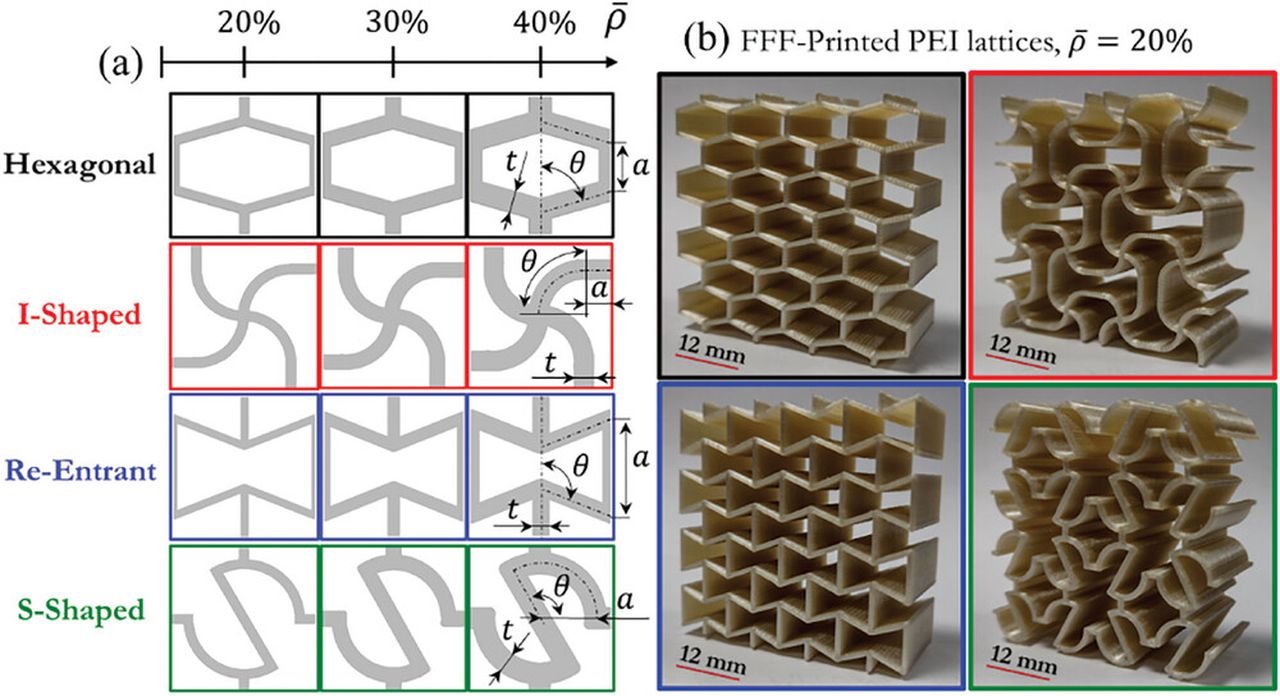
Novel design parameter dubbed “enhancement factor” helps minimize structural defects.
A new analysis of the deformation mechanisms which cause 3D-printed materials to fail under strain could help create future generations of stronger, lighter plastics.
Engineers in the UK and Italy are behind the research, which provides insight into the delicate balance of structural factors at play in the design and construction of lattice materials.
The team developed a design parameter called the ‘enhancement factor’, which they claim offers a reliable way to fine-tune new lattice designs to minimize structural defects and maximize performance.
New guidelines for 3D printing based on the team’s published findings could help material scientists develop robust new 3D-printed lattices with advanced properties.
In the paper, the engineers describe how they scrutinized the 3D printing process of polyetherimide (PEI) across four different lattice designs built at three different relative densities using fused filament fabrication. PEI is a sturdy thermoplastic that can be easily melted and reshaped, making it a useful, recyclable feedstock material for 3D printing.
The team subjected the materials to a series of stress tests, repeatedly flexing, pulling and compressing them until they broke. Using micro-CT scans and thermal analysis of the materials after the tests, they found that low-density lattices, which contain more empty space than material (thin-walled honeycombs), tended to buckle and fold under pressure – an expected result.
However, the higher-density lattices often broke along the lines where individual strands of printed PEI filament met each other – a weakness known as ‘interlayer damage’ – which prevented the materials from absorbing as much energy as the team expected based on the cell wall thickness of the printed lattice material.
Using data from the tests, the team developed computer models of the material, allowing them to run virtual tests and explore how the materials would respond to real-world loads without having to print new test materials each time.
The results of their modelling showed that the ability of PEI lattice material to absorb energy was limited by defects introduced when more than two layers of plastic strands were laid next to each other. The best-performing lattices had cell walls no more than twice as thick as the width of the PEI strand.
The team’s enhancement factor tool, created based on their results and validated further with real-world experiments, helps predict how much removing defects from the manufacturing process will improve the performance of any given lattice design. In the future, designers developing new lattice materials could use enhancement factor calculations to create better performing structures.
Professor Shanmugam Kumar of the University of Glasgow’s James Watt School of Engineering, the paper’s corresponding author, said: “[T]he structures produced by additive manufacturing can be undermined by process-induced defects, which hold them back from achieving their full potential. What we set out to do with this research was to build a comprehensive picture of how those flaws are introduced and what steps we can take to account for them at every stage in the design process to produce optimum results.
Read the rest of this story at ENGINEERING.com
